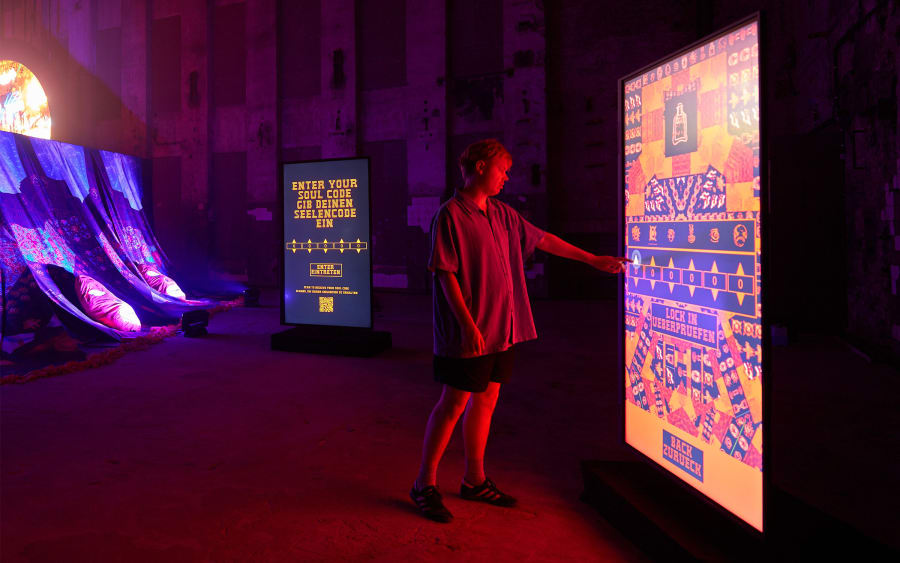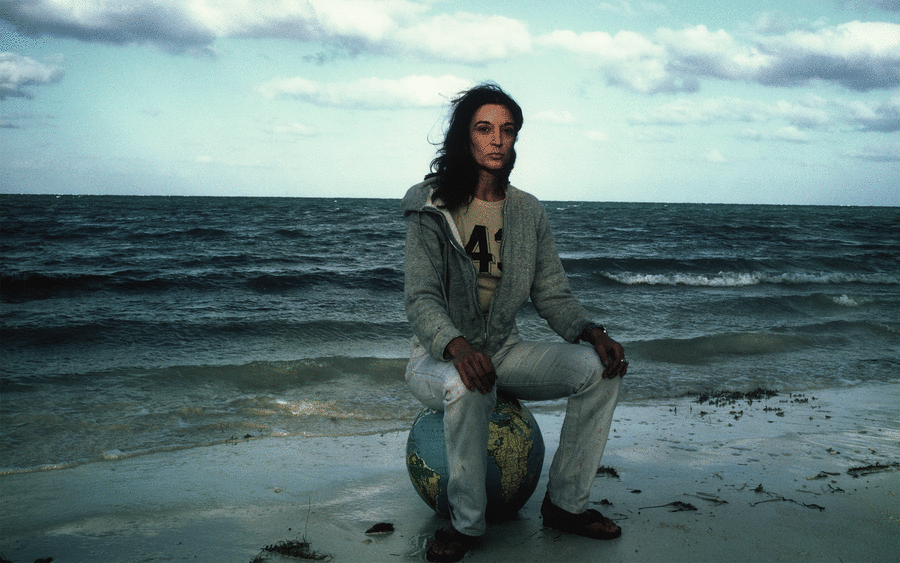‘I’m interested in this idea of darkness,’ says Oscar Murillo, over a Zoom call to discuss his forthcoming participatory project, ‘The flooded garden’, which he will realize later this month in Tate Modern’s Turbine Hall. Its title is an allusion to Claude Monet’s famous garden at his home in Giverny, France, where the French Impressionist master produced some 250 paintings of water lilies in the last three decades of his life. Murillo is not, perhaps, the first contemporary artist one might expect to reference Monet. Born in Colombia, and raised in London from the age of ten, the 2019 joint Turner Prize winner is celebrated for a socio-politically engaged practice that – through paintings, sculptural installations, video, live events, and collaborations with different communities – interrogates the forces that bring us together, and keep us apart, on our globalized, 21st-century planet. Given this, why is he now glancing back at the late Impressionist epoch, and Giverny’s light-dappled pond?
Monet’s water lilies are, as Murillo acknowledges, ‘gorgeously accomplished’ and ‘loved the world over.’ However, what drew him to these canvases was the fact that many of them were painted during a time when Monet’s vision was clouded by cataracts. The French artist was tormented by what he himself called a ‘biological inner antagonism,’ with it taking over a decade for him to summon up the courage to submit to the surgeon’s knife. Reflecting on this, Murillo began to imagine Giverny not as a serene paradise, but rather as ‘a place of suffering, where this triumphant and posthumously revered body of work was created. The complexity of this fascinated me from a socio-political aspect.’ For Murillo, cataracts became a powerful metaphor for the way that individuals and social groups are so often blind to each other, and to themselves, even though this blindness – this darkness – is a source of both pain and fear.
‘The flooded garden’ will see Murillo erect two huge, 5-metre-tall curved scaffolds in the Turbine Hall, their shape echoing the curvature of the panoramic cycle of eight water lily paintings that Monet gifted to the Musée de l’Orangerie, Paris, and which the critic André Masson described in 1952 as ‘the Sistine Chapel of Impressionism.’ These scaffolds will support some 500 square meters of raw canvas, on which hundreds of people, from international tourists to members of Tate Modern’s local community in Southwark, have drawn doodles and scribbled messages prior to the project’s opening. (The artist characterizes these inscriptions as ranging from ‘the trivial to the profound.’) Once the canvas is installed in the Turbine Hall, visitors will be provided with paint brushes and blue, pink, and yellow artist grade acrylic pigments, and invited to ‘flood’ the canvas with brushstrokes that recall the lapping, surging energies of water in motion.
Murillo plans to be present to observe what he calls this ‘multi-individual performance,’ in which participants may take playful pleasure in making their own marks, only to see them obliterated when the next person in line picks up a brush, and gets to work. ‘There is a kind of violence in that,’ says the artist, comparing the act of overpainting to the clouding effect of a cataract. The project will run for a little over five weeks, and ‘the final image’ of this vast, collective palimpsest won’t ‘emerge until the end.’ Ultimately, Murillo is ‘interested in the experimental gesture, more than the outcome. Which is ironic because while it started off with deconstructing aesthetics, it also has the potential to end up becoming an aesthetic thing.’
To invite the public to paint waves is to invite them to paint a form with multiple resonances. We might think of our species’ evolutionary beginnings in the primordial oceans, of rising sea levels in our era of climate emergency, and of the way vast bodies of navigable water connect the Earth’s landmasses, providing conduits for travel and trade, colonialism and migration, a perpetual flow of people, goods, and ideas. Murillo recalls that as a child in Colombia bound for a new home in London, he had ‘no concept of where the UK was. I remember looking it up on my globe, and seeing this island. There was just so much water.’ That said, he’s keen to stress that ‘The flooded garden’ is not about ‘my own narrative.’ To him, the sea speaks of ‘how civilizations have been created, our systems of humanity. [It is] universal, and we all have a relationship to it.’
One of the curators of Murillo’s Turbine Hall project, Molly Molloy, explains over email that the Tate looks ‘to practices such as Murillo’s to illuminate how we might reimagine the museum as a space for encounters with art as a living history, exploring how people and ideas can merge like floods of water.’ While she sees ‘The flooded garden’ as having ‘a seamless continuity’ with his ongoing project ‘Frequencies’ (2013–) – an archive of the desk-top doodles of school kids from over 30 countries, which taps into an extraordinary well of unconscious creativity, energies, and desires – she also positions it within the broader history of participatory art, citing pioneering figures including Allan Kaprow, Palle Nielsen, Hélio Oiticica, and David Medalla. Molloy argues that Murillo’s project ‘encourages us to rethink our role as gallery visitors. It invites us to move beyond being mere spectators and become active participants,’ opening up ‘new ways for us to appreciate and connect with the function and potential of art in our daily lives.’
For Murillo, site is key to the project’s meaning. He describes the Turbine Hall as ‘kind of a main protagonist,’ and notes that Tate Modern’s architects, Herzog & de Meuron, conceived of this huge interior space not as a gallery, but as a street. This is somewhere, says the artist, that ‘does not belong to the museum, but to the urban environment.’ Step outside the Turbine Hall’s doors, and you find yourself on the banks of the Thames, a river painted several times by Monet, and one that has connected London to the rest of world throughout its long history, for good and for ill. We might wonder whether visitors to – or rather participants in – ‘The flooded garden’ might linger here a while, and contemplate its waters, watching as they change speed and color, constantly remaking themselves as they flow out to meet the sea.
Tom Morton is a writer, curator, and regular contributor to Art Basel Stories, ArtReview, and frieze, based in Rochester, UK.
Oscar Murillo is represented by David Zwirner (New York, Hong Kong, London, Los Angeles, Paris), kurimanzutto (Mexico City, New York), Carlos/Ishikawa (London), Taka Ishii Gallery (Tokyo, Kyoto).
Oscar Murillo’s ‘The flooded garden’ is on view at Tate Modern, London from July 20 to August 26, 2024.
Caption for top image: Oscar Murillo, surge (social cataracts), 2022. Photo by: Tim Bowditch and Reinis Lismanis. Courtesy of the artist. © Oscar Murillo.
Published on July 19, 2024.


